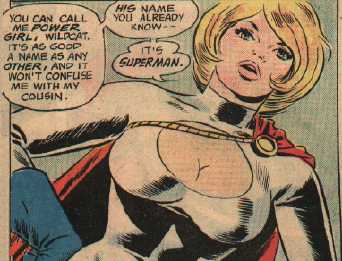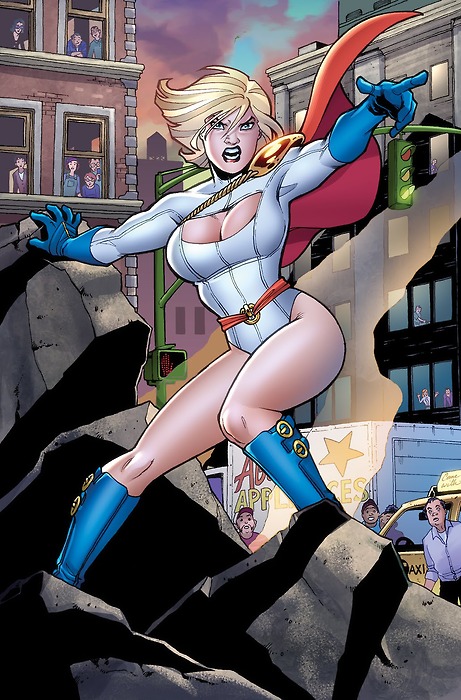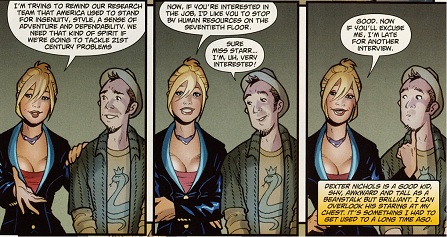Some douchenozzle thought it was up to him to decide who was a geek or not; Nick Mamatas sets him straight:
The same is true in the sexual realm: geek boys weren’t being rejected in high school because they liked Star Wars, or because it’s impossible to find a girl who also liked Star Wars. They were being rejected because of their appearance, weight, smell, attitude, visible handicaps, foreign accents, failure to own a car, general “creepy” vibe, failure to be interested in women as human beings, difficulty in carrying on a conversation, an annoying giggle, slouchy and asocial demeanor, etc. And it’s not like geek boys stared across the classroom at the geek girls, with their braces and weird jutting chins and nose-picking habits and horse books, and declared undying love over mid-afternoon Legos either. Indeed, one reason why sexist attitudes toward attractive women are so prevalent in geekdom is because of the mix of shame and desire attractive women represent to men who feel excluded from the supply of sexual encounters out there in the world. It’s abjection—one wants what one cannot have because one is revolting, so one projects that same revulsion on the object of their desire. Some geek men want these booth babes so much that they can’t stand them.
Of course, most geek men also grow up eventually, find lovers, comb their hair, take up exercise and get over junior high. They don’t need “geek” as some sort of badge of honor. The ones that do, well, they’re the ones I suspect are most likely to accept sexist ideas about attractive women, and fearlessly promote them online, where they’re safe from reprisals by the jocks of the adult world. (HR departments and the like.) That is, they become bullies. Why does a bully pick on a dork? Because it’s safe—there’s no downside to doing it. Why does a dork pick on a woman? Because it’s safe—there’s no downside to doing it. I mean, it’s not like the “booth babe” was otherwise going to go back to the geek’s hotel room (which he is sharing with four other smelly weirdos) with him, right? So, rage rage, on and on, and all to protect geek culture from the endless horrors of non-dorks and big tits?
It can be annoying to see the “cool kids” jump on a subculture bandwagon, but I’ve never understood the visceral hatred some socalled geeks have to people new to fandom, to everybody who isn’t just like them. Perhaps because I grew up in an environment that was both far less poisonous than the American school system, where you don’t have all that jocks v. nerds nonsense, I don’t have the resentment some of these idiots have carried with them from high school, certainly not against women, “hot” or otherwise. It’s dumb, it’s sexist, it doesn’t make you a better geek.
In the ensuing comment thread at Nick’s, quite a few people make good points which I’ll copy here shamelessly:
Hal Duncan:So, yeah, my message for the once-bullied male geek: welcome to the shitty end of the stick we call heteronormativity; please to not reinforce it with misogynist douchebaggery.
Kermit:
Well, again, if you have no foundation (because somewhere along the line in your family your original culture was renounced), then you’re an even bigger sucker for the capitalist-imperialist pseudo-culture, and whatever part of it you embrace, you’re going to embrace HARD. This is what produces the fanatics, whether they’re sports fans (and I’d challenge you to find a better metaphor for imperialism than pro-sports) or fantasy/sci-fi geeks. And damn if so much of our entertainment doesn’t fully embrace and propagate those “American” values. I mean, shit, a lot of the comic books were made as a sort of USAmerican propaganda. And Wrestling, with its depictions of “American Hero” vs. the evil Russians and Arabs? And there was also a strict gender divide in Wrestling (GLOW, anyone?) but that’s aside from the point I’m making.Seth Ellis: It’s the relentless relationship of subcultural identity to product, and hardly anything but product, that continues to get me down. It’s like the message is, dear fans: please be suckers forever.
La fields: In conclusion: I didn’t go on any dates in high school either, but being a geek was the one thing that gave me a social life, a sense of camaraderie, and the perspective to realize that there were more people like me out in the world, and I could find them if I managed to survive high school (so you know, a real incentive not to kill myself or others!). It made the bullying I got just for walking around as myself in that viper’s nest bearable.
Sonya: I understand how moderately attractive or homely gals would find these Booth Babes perpetually irritating. Women can be scary. Scary mean, scary judgmental, scary impulsively ostracizing, etc. The more confident a woman is about her sexy body (or at least the more believable her portrayal of confidence) the more intimidating she becomes. Women perceived as visual appealing tend to land at the top of the heap due to the culturally normative value placed on sexual desirability and the more perceived power she will hold within the hierarchal social structure.
Troubler: So it is entirely consistent to criticize companies’ use of booth babes, and at the same time argue that booth babes are people and should be treated with respect. In fact it is the companies who hire them who are not treating them with respect because the job itself is objectifying and dehumanizing.
And always remember: it’s not up to any man to decide which women are the real geeks. Think otherwise and you’re a sexist numbnut.




